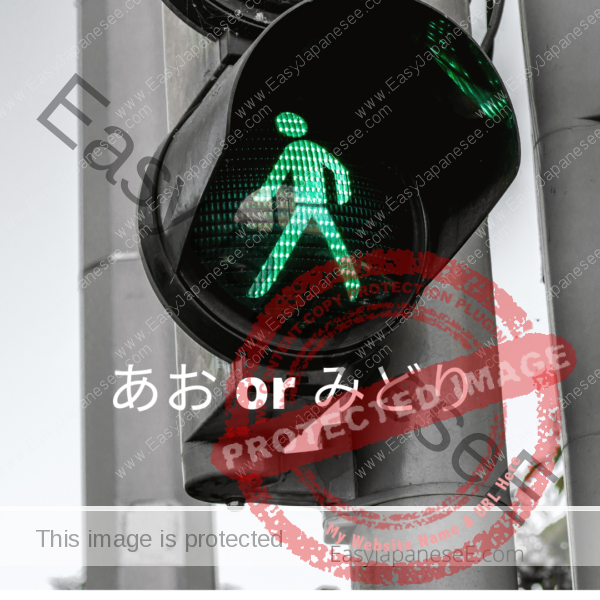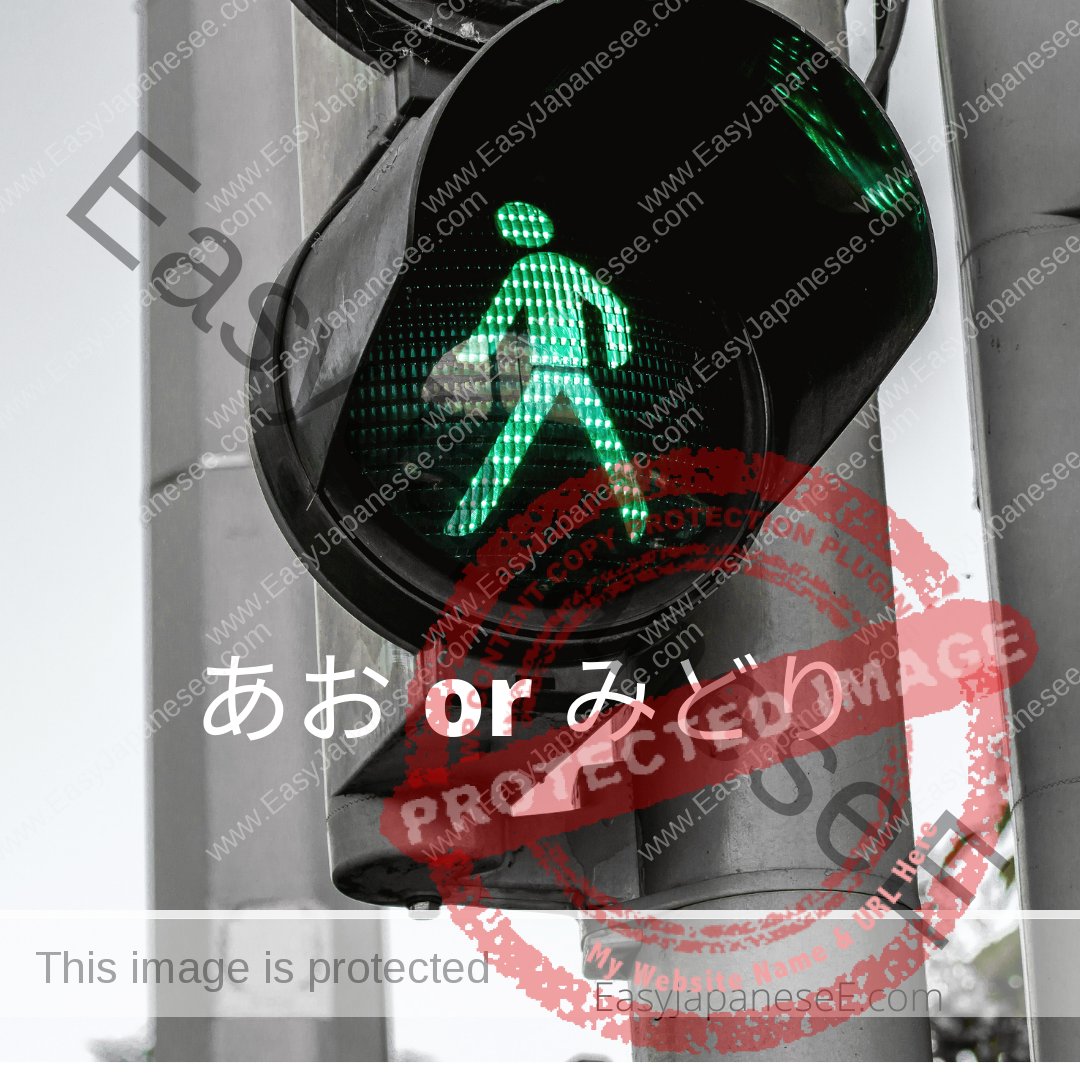
I believe the following English sentence is universally correct: “When the traffic light turns green, you can go.”
However, if I say this in Japanese, I’d say: 信号(しんごう)が青(あお)になったら、進(すす)んでいいです。
Have you noticed something strange?
I didn’t say and most Japanese native speakers won’t say: 信号(しんごう)が緑(みどり)になったら、進(すす)んでいいです。
It is not that traffic lights in Japan have a different colour from the rest of the world. The “green lights” are still “green” (although apparently the Japanese “green” light has the closest hue to “blue”) but we call it 青(あお /ao)!
Why? Apparently the Japanese language did not have a word for “green colour” for a long time and people were calling both blue and green “青(あお /ao)” until around the 11th century and even now, we often use “青(あお /ao)” for “green” as well as for “blue.”
The English word “green” has the meaning of “young” or “immature” and we the Japanese often use 青(い) for that. For that reason, “lush green” is often translated as 青々とした緑.
Today’s point
If you hear the word 青い, that could be “blue,” “green” or “immature.” Rest assured, 緑 is always for “green” (could be “greenery”).
Hope you found this interesting!
For Advanced Learners
I said: 信号(しんごう)が青(あお)になったら、進(すす)んでいいです。
I didn’t and won’t say: 信号(しんごう)が青(あお)くなったら、進(すす)んでいいです。
Traffic lights are man-made, and they change from “red” to “blue” instantaneously, so you need to use the noun 青 here.
On the other hand, if somebody has gone pale due to a shock or illness, we say: xxxさんは青くなりました。This 青 is the stem of the いadjective 青い. (yes, 青い also means “pale” in Japanese.)
As a rule of thumb, when we talk about a change of colour, we use:
- [いadjective stem] + く なります for a natural, gradual change; and
- [noun] に なります for a mechanical, quick change.
Remember, there are only 6 colour related adjectives: 赤い (red)、青い (blue/green)、黄色い (yellow)、白い (white)、黒い (black)、茶色い (brown) and they all can be used as a noun if you take the ending い off. Other colour words are all nouns, not なadjectives.


One Reply to “Traffic lights – green or blue?”